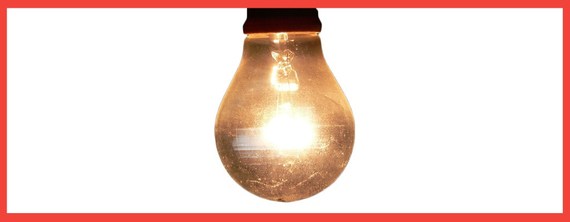Any marketing executive worth their weight will be hyper-focused on one thing...
ROI.
Understanding if the benefit outweighs the cost of a specific marketing campaign or initiative.
So why ignore ROI when it comes to your brand's podcast?
For some reason, most marketers wear blinders when measuring the success of their podcast...and their sole focus becomes the number of times each episode is downloaded.
I don't want to completely disregard audience size...but like any form of content, it takes time to grow an audience.
But fortunately with the podcast medium, you can measure the success (aka ROI) of your show long before you ever start seeing significant download numbers.
Gain Some Perspective
When it comes to sales productivity, do you only measure the number of dials your reps make?
Of course not.
You measure the number of demos that get scheduled.
You measure how many times an existing customer upgrades their plan.
You measure how many new deals get closed.
In essence, you measure the true return on your reps' time.
So in the same way that sales productivity is measured in a variety of ways...the same is true of your podcast.
You can break down podcast success metrics into three major buckets:
1. Thought Leadership
2. Relationships
3. Waterfall Content
By only measuring downloads, you're only expecting your podcast to establish or maintain your brand's thought leadership.
Even though thought leadership is a huge benefit, it's not a benefit you'll reap immediately. It takes time to develop a listener base...it doesn't happen overnight.
However, there are two other major benefits of a podcast...and these two benefits can be reaped immediately, as soon as your show goes live.
Instant/Short-Term ROI of Podcasts
Living in the microwave generation has made us want things...and want them yesterday.
Fortunately, podcasting offers both instant gratification as well as long-term rewards.
The two short-term benefits of a podcast are relationships and waterfall content.
Relationships
By asking people to be guests on your show, you're initiating relationships with ideal clients, referral partners, and industry experts.
It's so much easier to create new relationships when you have something of tangible value to offer from the start. So what's the value you can offer as a podcast host?
When you host a podcast, you offer your guests a platform to promote their product or service to your audience.
Think about it...
If you're trying to connect with new referral partners, which of these two questions will more effectively open the door to a relationship:
1) Hey (name of potential referral partner) - Our company is really great. Want to be a referral partner for us?
OR
2) Hey (name of potential referral partner) - I love what you and your team are up to. I'd love to feature you as a guest on our podcast. Up for it?
Now that the relationship has been effectively initiated, let's look at what happens next...
During your interviews, you're having human-to-human conversations and you're able to connect in a way that doesn't require black text on a glowing screen.
Podcasts are a rare form of media that cut through the formalities of typical business protocol, and allow you to create strategic relationships in a genuine and personal way.
Because as the saying goes: It's not what you know...it's who you know.
A podcast allows you to know practically anyone you want to know, by simply asking them to be a guest on your show.
Waterfall Content
The second short-term benefit of a podcast is waterfall content.
Before we dive too deep, understand this: Your podcast content should never just live within the confines of podcasting platforms (iTunes, Google Play, Stitcher, etc).
A waterfall content strategy takes a single piece of content (a podcast episode) and multiplies it to expand the content's reach.
So why is content from your podcast able to reach such a wide audience? Because it's relatively easy to transform audio content into tons of other content.
By having a writer listen to each podcast episode, you can repurpose your interviews into blog posts, tweets, email marketing campaigns, LinkedIn published posts, Medium articles, quote graphics, Facebook posts, video scripts, and the list goes on and on.
To put it simply, podcasts are one of the richest forms of media in marketing today.
By repurposing every episode through a waterfall content strategy, you can integrate the content from each episode into every marketing channel you use.
To learn the ins and outs of implementing a waterfall content strategy, check out our blog post titled: Why Every B2B Marketer Should Have a Waterfall Content Strategy.
Long-Term ROI of Podcasts
The long-term ROI of podcasts is like a slow cooked meal.
Everyone wants the flavor and the richness, but not many people are willing to wait the 8 hours that it takes to cook.
The same goes for thought leadership...the long-term return on investment of a podcast. It's not something you reap immediately, but it's well worth the wait.
By producing a podcast that features genuinely helpful content, you're giving back to the industry in a unique way. In a way that positions you to become an influencer in your space.
But building up a treasure chest of great content doesn't happen overnight.
Measuring Thought Leadership
A couple of metrics to measure your level of thought leadership:
1) Website traffic - how many unique/repeat visitors are coming to your site? How rapidly is your traffic increasing?
2) Inbound leads - how many leads are coming to you (instead of you going to them)?
TIME TO START MEASURING THE RIGHT THINGS
Alright, now it's time to look at the specific metrics (other than downloads) to measure the success of your podcast.
Here they are:
1) Relationships
With a podcast, you can engage with people that you would've otherwise never been able to get a meeting with...by simply inviting them to be a guest on your podcast.
This metric has instant measurability in the number of relationships formed. And some of these relationships, depending on your business, could represent millions of dollars in lifetime value for your company.
A podcast positions you to build a variety of strategic relationships, but we'll focus on three types of relationships here:
1) Ideal clients
2) Referral partners
3) Industry influencers
Ideal Clients
A podcast perfectly positions you to create relationships with your ideal clients.
You can introduce yourself as a journalist and thought leader instead of a salesperson. You're offering your prospect a platform to share their expertise with an audience.
Connecting in this way enhances your brand, and allows you to connect 1 to 1 outside of a sales context where their guard would normally be up.
In the first 90 days of hosting the B2B Growth Show, we added over $1.2M to our sales pipeline. Here's a breakdown of the process and tools we used to get there.
Referral Partners
The second group of people you'll be able to build relationships with is referral partners.
In the B2B space, the right referral partner can be a game changer.
So make sure to measure the number of referrals that come from your newly formed relationships with your podcast guests.
But to get referrals, you have to ask for them. Fortunately, having a podcast makes it incredibly easy to ask for referrals.
Here's a simple email script that you can use to get referrals:
Hey (first name),
Thanks so much for being a guest on our podcast.
Do you know any other (description of your ideal customer profile) that would be a great guest for the show?
Thanks,
(your name)
Industry Influencers
In addition to the relationships you can create with ideal clients and referral partners, you can also leverage your podcast to connect with industry influencers.
These are the people who carry the torch in your industry, and can have a significant impact on your brand.
They most likely will share their episode through their social channels, and your brand will reap the benefits of their audience size. But more than that, you now have an established relationship with that influencer.
This relationship can open doors to a variety of opportunities:
1) Having them speak at an upcoming live event that you're hosting
2) A joint webinar that gets promoted to both your list and the influencer's list
3) Getting their feedback on various aspects of your brand
4) Introductions to other influential leaders in your industry
5) Referrals
Keep in mind though...these opportunities won't present themselves after just one podcast interview. The interview is just the catalyst for the relationship.
To maximize the full benefit of your podcast, you'll need to have a plan in place to nurture the relationships that come from your show.
Here are some creative ideas to jumpstart your creativity: 23 Ways to Nurture Relationships with Your Podcast Guests
Relationship Success Metrics
You can measure the success of your relationships by measuring:
1. How many ideal clients have you created relationships with by asking them to be on the show?
2. How much potential revenue do these relationships represent in your pipeline?
3. How many potential referral partners have you created relationships with by asking them to be on the show?
4. How many referrals and closed deals resulted from these referral relationships?
5. How many thought leaders have you created relationships with by asking them to be on the show?
6. When the influencer shared their episode, what was the reach and engagement of their post(s) or email blast?
7. What other opportunities did these relationships create?
2) Written Content
A common pain point for B2B marketers is that it's tough to consistently come up with relevant, interesting, and unique content ideas.
And if the ideas weren't hard enough...then they have to take those ideas, and turn them into several types of content (mostly written forms of content) that can then be leveraged across every marketing channel.
It makes me sweat just thinking about it.
Ideas
However, podcasting gives you the ability to turn your guests' knowledge, passion, and experience into a relatively large piece of content (a 15-20 minute audio interview).
That's right...it's your guests that are coming up with the content ideas. Not your internal team.
And because your guests are made up of ideal clients, potential referral partners, and industry influencers...then it's pretty much a guarantee that the topics they want to talk about will resonate with their peers.
And who are their peers, you ask? They just so happen to be the exact group of people you're trying to attract to your website.
More ideal clients.
More potential referral partners.
More industry influencers.
Dwouhpp!!
(that was the sound of me dropping the mic)
Forms of Written Content
Ok, so now that you know that every podcast episode is going to be appealing for your target audience...now what?
Now it's time to take those relevant, interesting, and unique podcast interviews, and turn them into written forms of content.
No blank screen syndrome. No starting from scratch.
Just take the content that's already been produced with the podcast episode, and turn it into words.
You can turn these audio interviews into:
1) Blog posts
2) LinkedIn published posts
3) Webinar scripts or outlines
4) Medium articles
5) Answers to questions on Quora
6) Emails in your marketing automation sequences
Written Content Metrics
To measure the metrics from written content associated with your podcast, look at:
1) How many blog posts have been created as a result of the podcast?
2) What are the subsequent metrics from those blog posts?
a. Check out this article by Hubspot about the 15 Blog KPIs You Should Already Be Tracking
3) How many people from your team created LinkedIn published posts from the content that originated as a podcast episode? (Note: LinkedIn published posts appear as a notification to EVERYONE in the publisher's network)
4) What was the reach and engagement from each of these LinkedIn published posts?
5) How many clicks to your website came from each LinkedIn published post?
6) How many webinars were birthed from content that came from your podcast?
7) How many leads were generated from each of these webinars?
8) How many of those leads converted into sales after the webinar?
9) How many clicks to your website came from the written content you published on Medium?
10) How much website traffic are you getting from your Quora answers?
11) How much engagement did you get from the specific emails in your marketing automation sequence that featured content from your podcast?
Didn't think you could milk that much content out of a single podcast interview did you?
Well this next part will really blow your mind...
Roundup Posts
Beyond the individual articles that highlight one specific podcast episode, there's another highly strategic piece of content that can be created.
You can repurpose collections of different blog posts related to similar topics into roundup posts.
Roundup posts are strategic for a few different reasons:
1) These posts give you another chance to engage with your guests, adding more depth & value to the relationship when you send them the link to the new article.
2) Roundup posts create a second opportunity for the guest to share another piece of your content through their marketing channels. More eyeballs on your content? Yes please.
3) It's likely that the guests you mention in the roundup post will link to that post from their brand's website. When this happens, your site will get valuable backlinks that makes Google (and your SEO guy) super happy.
Roundup Post Example
Let's say you wrote a roundup post titled: Why 25 B2B CMOs Say Outbound Is Dead
By creating this piece of content, you now have the opportunity to reconnect with those 25 podcast guests...AND you have the potential for 25 CMOs to share your blog post on their own social channels, blog, or email list.
3) Backlinks
There's no getting around it. Backlinks are important.
They're imperative for improving SEO and establishing your brand as a thought leader, but it goes far beyond that. Learn about the benefits of backlinks in this article.
For example, the B2B Growth Show was featured in The Top 10 Podcasts for Sales Professionals and Leaders and The Best Sales Podcasts You Should Be Listening To.
These types of backlinks help our SEO by establishing us as an authoritative website, and they also bring a targeted audience to our website. Double win.
Backlink Metric
Pretty straightforward metric that you should measure here:
1) From a link building standpoint, how many times has your show been linked to by authoritative websites?
a) To measure this we use tools like Ahrefs & Google Analytics.
4) Social Posts & Distribution
How much mileage on social are you getting from each podcast episode?
Every podcast episode you produce has the ability to generate multiple social posts native to each platform.
These posts promote the episode, build your brand, and expand your reach.
Social & Distribution Metrics
Metrics to track here would be:
1) Social shares for each episode's landing page.
2) How many social media posts were generated for each episode?
a. Facebook, Twitter, Instagram, LinkedIn
b. Periscope, Snapchat, Facebook Live (these are great for catching behind the scenes footage)
3) What were the success metrics from those posts?
4) How many guests shared these posts through their channels?
5) How many people on your team share your posts on LinkedIn?
a. We touched on this earlier, but there are so many compelling reasons to publish natively on LinkedIn, so you want to make sure your team is sharing your content on their respective profiles.
i) For example, when you post an article on LinkedIn on your personal profile, your entire network will be notified with one click.
b. To get a more thorough understanding of this platform, you'll want to read 4 Ways Your Sales Team Should Be Using LinkedIn (But Probably Isn't).
5) Guest Blog Posts
We cannot ignore the power of guest blog posts.
Just like your podcast can create relationships with ideal clients, referral partners, and industry experts...your show can also open doors to guest publishing opportunities on other industry blogs or publications.
Each one of your guests likely have a blog for their brand. So after their episode goes live, pitch them on the idea of writing a blog post for their site.
It's a win/win for both parties: they get an original piece of content that they didn't have to create and you get exposure to their network.
Always stick to their guest post guideline, but if they don't have a specific framework...use this one: 12-Point Checklist To Never Writing a Bad Blog Post Again.
Conclusion
Podcasts pack a massive punch.
They have immediate impact, but also lasting sustainability that will take your marketing strategy to the next level.
By measuring the true ROI of your show (relationships, written content, backlinks, social mileage, and guest blog posts), you'll start recognizing the significant impact that your podcast is having on your brand.
After a while, all of these metrics will start compounding on one another. Next thing you know, your brand will be a trusted thought leader in your industry.
At Sweet Fish Media, we produce podcasts for B2B companies.
But this isn't just a service we offer...we practice what we preach. A huge portion of our content strategy is centered around our own podcast (B2B Growth Show).
We've seen the enormous benefits that B2B Growth Show has had on our brand, and we're proud to provide a service that we genuinely believe in.
If you'd like to chat with us about what a podcast might look like for your brand, click here and let us know.
If you found this content helpful, but your brand isn't quite ready for their own show...we'd love it if you shared this article with your network.
The power of podcasting is real...and we want the world to know. : )
You can find the interview that this post was based on, and many more, by subscribing to the B2B Growth Show on iTunes.
___________________________________________________________
James Carbary is the founder of Sweet Fish Media, a podcast production service for B2B companies. He's a contributor for the Huffington Post & Business Insider, and he also co-hosts the B2B Growth Show: a podcast dedicated to helping B2B executives achieve explosive growth.








